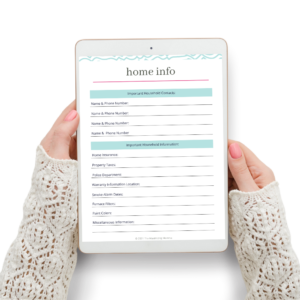Confused about how to set goals? Here are 5 goal-setting methods to help you get started!
We all have goals we want to accomplish, but not all of us know exactly how to get there. Fortunately, getting what you want doesn’t have to be hard. All it takes is some motivation and a clear path of what you need to do. That’s what we’re going over today – how to set goals that motivate you and keep you accountable. Now, you’ve probably heard of SMART goals, but did you know there are many other goal-setting acronyms you can use? In this post, I’m going to go over five of the most popular goal-setting methods so you can choose the method that resonates most with you!

#1 – S.M.A.R.T. Goals
SMART goals are primarily used by businesses as a way for management to structure an actionable plan that gets results.
- Specific
The more specific you are in describing your goal means you’ll have a better chance of accomplishing it. To set a specific goal, ask yourself what exactly you want to achieve and when. Is there anyone who will help you in the process? Why do you want to reach this goal?
- Measurable
To set a measurable goal you should break it down into smaller tasks and then set clear times and dates that you plan to accomplish each task. For example, if you have a goal to organize your entire house, you could divide up your goal into smaller, more manageable tasks with a specific date for each task. Such as focusing on one room every week.
- Attainable
Make sure that the goal you are setting is practical for your current lifestyle. Consider the time and energy it will take to reach your desired result. I had a goal to go back to school this year. But I also need to get my son ready for pre-k and I’m about to start renovating my late mother’s house. Ultimately, I decided that it wasn’t practical for me to go back to school until after I put her house on the market.
- Relevant
Is the goal you’re aiming for truly appropriate? You need to think long and hard about whether you truly want to be a working mom with a house full of kids and a difficult job. One way you can do this is to take into account the type of personality you have. Are you patient enough to handle multiple children?
- Timely
Set a timeline for your goal, whether it be a week, a month, or a year, and include a specific date if possible. Setting a specific timeline is an extremely effective way to help you accomplish your goal in a certain amount of time. Without a timeline, you will be less likely to accomplish the necessary tasks needed to reach your desired end result.

Related Post: How to Maximize Your Time at Home
#2 – H.A.R.D. Goals
HARD goals were popularized in 2010 by author Mark Murphy in his book “Hard Goals: The Secret to Getting From Where You Are to Where You Want to Be”. Hard Goals are more challenging than SMART Goals because they are designed to push you further.
- Heartfelt
Think of at least two or three heartfelt reasons why you want to achieve your desired goal. You will be more likely to achieve it if you have a strong sense of attachment to it.
- Animated
Being animated means to be excited about your goal. To get excited, you can visualize exactly how your life will be once you have completed your goal. Describe what your days look like, who you’re with, and what you’re doing. Some experts believe the more we can picture our desired end result, the more likely we will be to carry it out.
- Required
Determine precisely why your goal is required or necessary. Do you want to eat healthier because of your chronic illness, or do you want to eat healthier so you can lose weight before swimsuit season?
- Difficult
The last letter in the H.A.R.D. goalsetting method is designed to get you out of your comfort zone and continuously develop new skills. One way to do this is to set a difficult goal so you have to push yourself in order to achieve it.
#3 – D.U.M.B. Goals
DUMB goals are big dreams! This goal-setting method was developed by Brendon Burchard, one of the most-watched motivation trainers in the world. In a highly energizing video he published in 2014, he talks about how our culture has become too wrapped up in left-brain things, like spreadsheets and checklists. Instead, he suggests we shoot for more “moon-shot” or “take-over-the-world” type dreams. The object is for you to focus on your dreams first and your goals second.
- Dream-Driven
To set a dream-driven goal, Brendon Burchard suggests thinking WAY outside of the box and moving on to another level of yourself and your career. An example would be to serve a million people or to cure cancer.
- Uplifting
The second part of a DUMB goal is to remove the negative aspects and make it uplifting, inspiring, and attractive. An uplifting goal is something that instantly gives you energy and motivation the minute you think about it. For instance, becoming more fit is a lot more uplifting than losing weight.
- Method-Friendly
The method is the procedure you will follow in order to accomplish your dreams. If I want to become an astronaut, there are a number of things I will have to complete before I can land a job at NASA. Make an outline of every required step, and then break those down into smaller goals that you can work on every day.
- Behavior-Driven
Brendon Burchard uses the term behavior-driven to describe triggers we specifically create to make us work towards our goal. A trigger is a specific thought or situation that prompts us to take action. For instance, every time I walk into work, I’m immediately focused on customer service. To achieve your dreams and accomplish your goals, you need to set up behavior-driven triggers.

Related Post: How to Accomplish Your To-Do List Every Day
#4 – C.L.E.A.R. Goals
CLEAR goals are primarily used by businesses in place of the SMART goal-setting method. They were developed by another motivational speaker named Adam Kreek. CLEAR goals are aimed at encouraging employees to keep up with the fast-paced world we currently live in and to work together as a team.
- Collaborative
A collaborative goal should encourage employees to work together.
- Limited
For a limited goal, it needs to have a limited or restricted amount of time pertaining to when you will start and stop. Other factors to consider include personal and geographical limits. You can start by asking yourself if you’re being realistic or if there is something that you should avoid in order to reach your goal.
- Emotional
Your goal should have a strong emotional connection to yourself and your employees. Similar to the animation in HARD Goals and the uplifting part of DUMB Goals, being emotional with your CLEAR goal is an effective way to accomplish it. After all, if you don’t have a strong emotional connection to what you’re trying to accomplish, you won’t be very likely to actually pursue it.
- Appreciable
To set a CLEAR goal, it needs to be appreciable or sizeable. You must be able to break it down into smaller tasks for long term success. To do this, you can start by asking yourself what the next action is that you need to take.
- Refinable
For your goals to be refinable, you need to be able to refine or modify them as needed. An example of this would be changing your college degree halfway through school, changing your business plan, or changing the living room paint color you originally chose. If you don’t consistently revisit and refine your goals, you will most likely stray off track and forget why you set them in the first place.
#5 – W.O.O.P. Goals
WOOP goals use mental contrasting and implementation intentions to help us change our behaviors and achieve our goals.
But what in the world are mental contrasting and implementation intentions? Both are extremely effective, proven techniques to help you reach your goals.
Mental contrasting consists of picturing what it will be like once you accomplish your goal, and then imagining any possible hurdles that might get in your way.
Implementation intentions are basically plans structured as an if-then statement. An example would be “If I catch myself getting distracted online, then I will immediately start exercising.” Or “If I am tempted to eat sweets, then I will put them away and eat something healthy instead.”
Therefore, a WOOP goal starts by imagining how your life will be once you have succeeded in your goal, then picturing any obstacles that might prevent you from getting there. Next, you’ll design a plan of action in the form of an if-then statement in order to resolve any obstacles you might face.
- Wish
Pick a challenging, but attainable wish that you want to accomplish. It can be a large business-related goal or a small personal goal like drinking more water.
- Outcome
Think of the best possible outcome or result that could come from you accomplishing your wish. If you want to drink more water, the best outcome could be that you feel more healthy and have more energy.
- Obstacle
Are there any obstacles that are holding you back and preventing you from making your wish a reality? Maybe you hate the taste of water or it doesn’t quench your palate?
- Plan
Decide on a plan that will help you overcome the obstacles. Water does not quench my palate AT ALL, so I made a plan to buy multiple different flavoring packets to add to my water. I also found that I will drink water more often when it is ice cold. So I invested in multiple vacuum insulated water bottles to keep around my house.

Types of Goals
One quick Google search will bring up multiple different “types” of goals. But the three most popular are Time-based, Focus-based, and Topic-based.
Time-based goals
- short-term
- long-term
Focused-based goals
- Focus-based is when the goal is based on something specific, like writing a book or earning your Ph.D.
Topic-based
- Personal
- Professional
- Financial
Goal Categories
Diving further into topic-based goals, there are 10 main topics (or categories) that you can focus on when looking to set goals.
- Family
- Health
- Personal Development
- Spirituality
- Finances
- Career
- Relationships/Friends
- Fun/Recreation
- Giving/Contributions
- Physical Environment/Home
If you want to live a more meaningful life, goal-setting will definitely help you get to where you want.
You can set different types of goals in multiple categories, but if you want to actually reach your desired results, you should create a clear plan of action that is easy to follow.
That’s where goal-setting methods can help.
Whether you choose to set a SMART goal, a HARD goal, a DUMB goal, a CLEAR, or a WOOP goal, make sure that you are setting, defining, and revisiting your goals often.
Which goal-setting method do you think is the most effective way to accomplish your dreams? Let me know in the comments below!
References
1.) To learn more about SMART Goals, visit Indeed’s Career Guide on Smart Goals.
2.) To read more about HARD Goals, pick up a copy of Mark Murphy’s book, “Hard Goals, The Secret to Getting from Where You Are to Where You Want to Be.” Or check out this video.
3.) To discover the success of DUMB Goals, watch this extremely motivating video by Brendon Burchard.
4.) To understand CLEAR Goals, read Adam Kreek’s article on why SMART Goals fail.
5.) To study CLEAR Goals, pick up a copy of Gabrielle Oettingen’s book, “Rethinking Positive Thinking: Inside The New Science of Motivation.”




Leave a Reply
You must be logged in to post a comment.